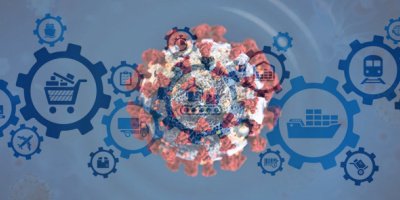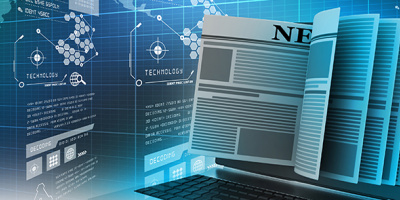It’s a coincidence that I came up with the idea for this “Midrange Insights” column at the same time as most Americans were scrambling to finish their tax forms and their obligations for supporting Uncle Sam for yet one more year. Like most people, I’d rather keep all the money I earn for myself and my family, but I grit my teeth and pay the Internal Revenue Service because the act of paying taxes keeps the country in which I live more or less civilized. (I do frequently wish the money that we all contribute would be spent with more foresight and compassion and less stupidity, but that’s another story.) The reason I bring up paying taxes at all is this: When you and I pay our taxes, we know, at least generally, what we are paying for because the back of the information booklet that comes with the IRS 1040 forms tells us where Uncle Sam gets the money and where it is being spent. We know roughly how much goes for social programs, defense, running the government, and so forth.
The people who are responsible for buying new AS/400s from IBM are not, however, so honestly informed. They are paying, in part, what I have come to think of as the interactive software tax—the cost of using IBM’s 5250 green-screen software that IBM fobs off as hardware costs in the new AS/400e Northstar rather than copping to the truth that it is really charging for OS/400’s 5250 software (for details, see “Midrange Insights: No Matter What Anyone Tells You, OS/400 V4 Is Not Free,” MC, May 1999). For those of you who don’t believe what the Office of Management and Budget tells us, I suppose AS/400 managers are as equally uninformed as American taxpayers about where their money goes as MIS managers are about what constitutes hardware and software in an AS/400e server acquisition.
Last month, I showed that OS/400 is not free, no matter what IBM tells you, and hinted at the idea of this interactive software tax. My analysis showed that, depending on how you look at it, OS/400 has always represented between 25 and 33 percent of the total cost of an AS/400 system. In addition, since the advent of the server models in 1993, as much as 70 percent of the cost of an AS/400 system’s hardware (and now, with the 7XX servers, base hardware plus interactive features) has really been paying for the use of OS/400’s 5250 protocol, not for processor hardware to drive that software, as IBM would
have the AS/400 installed base believe. I am not going to go through that analysis again. This month, I want to discuss the effect this interactive software tax has had on IBM’s AS/400 business and on the future strategies that AS/400 customers should take in light of it.
The Effects on IBM’s AS/400 Business
To start with, it is very difficult to assess the effect the interactive software tax has had on IBM’s AS/400 business because IBM has only spoken in the vaguest terms about the AS/400’s financials over the past 11 years. From time to time, an AS/400 executive slips and gives a piece of information that helps midrange analysts piece together the AS/400 revenue picture, but IBM offers little guidance.
Such was the case when I informed IBM that I was going to do this story. The numbers that are presented in Figures 1 and 2 are based on a hodgepodge of sources I have pulled together over the years. These sources include industry analysts and Wall Street analysts, all of whom have a vested interest in pulling apart IBM’s numbers each quarter and each year to see how various lines of business are doing. I do not claim that these numbers are authoritative, and neither did they. Only IBM knows for sure what AS/400 sales are year by year, much less what AS/400 components account for those sales. Nonetheless, for the purposes of illustrating two phenomena that effect AS/400 sales (the interactive software tax and IBM’s switch from external to internal disk subsystems for AS/400s in the 9406 family of processors), I have taken a stab at sussing out the AS/400 business since its inception in 1988.
For the first six years of AS/400 sales, everything was more or less straightforward. Customers bought an AS/400 processor and an OS/400 license, which cost about a quarter of the cost of the total AS/400 system. In Figure 1, the stacked columns represent total AS/400 server sales for each year since 1988 and going out to
2000. In this chart, “server” means both AS/400 systems—machines with fully enabled 5250 terminal software—and AS/400 servers—and those low-priced AS/400 models with crippled 5250 software that IBM has been selling since 1993. The highest level of each stacked column shows how much money IBM made selling AS/400 processors and OS/400 licenses in each year. (Again, these are estimates, not real numbers from IBM.) As you can see, AS/400 server and operating system revenue usually hovers around $3.5 billion a year, with a peak year of almost $4.5 billion in 1996 because of the pent-up demand for first-generation RISC AS/400 models. As best as anyone can figure, OS/400 represents from $300 million to $500 million a year, except between 1990 and 1992 when it spiked up to about $750 million a year as IBM increased prices and sold bigger AS/400 system configurations.
The moment IBM announced the AS/400 Advanced Servers in September 1993, everything changed. As I showed last month in great detail for many different AS/400 generations, an AS/400 system uses the same hardware as an AS/400 server but carries a much higher price tag. The reason for this is that its 5250 software can run at full-tilt boogie, meaning that the difference in price covers only the cost of OS/400 licenses (remember, servers are usually in a lower tier than systems with identical processors) and 5250 software. The extra money that AS/400 system users pay (in hardware costs) to access the 5250 software is the interactive software tax. As it turns out, this tax represents a very big portion of AS/400 sales since 1993. Given approximate system-server sales mixes I have obtained from IBM over the years, rough estimates on OS/400 sales and AS/400 hardware sales, it takes only a little spreadsheet magic to figure out that the interactive software tax (hardware sales that should have been allocated as software sales) has represented a low of 6 percent of total AS/400 processor sales in 1993 to a high of about 52 percent of sales in 1996. The percentage is going down over time as customers adopt AS/400 server models and use them in server mode, which means running them as database servers for intelligent or Web-enabled clients. With the 7XX models, determining the interactive software tax is relatively straightforward: Add up the total sales of interactive
“hardware” features for 7XX servers, and add to that the portion of the model 170 Invader server sales that is really dedicated to 5250 green-screen processing.
Between 1993 and 2000, the interactive software tax will add up to about $9.5 billion of a total of $27.7 billion in sales (provided IBM is able to hold overall AS/400 server revenues level over the next two years). That’s a little more than 34 percent of the total money that IBM brought in selling AS/400 hardware and operating systems. By calling its 5250 software a part of the operating system that is in turn a part of the hardware, IBM has been able to shift billions of dollars in middleware sales (after all, the 5250 protocol is more like IBM’s CICS or TXSeries middleware than it is a processor) to hardware sales. This has had a dramatic effect on both IBM’s server sales and overall hardware sales.
Overall AS/400 hardware sales (servers plus disk storage, which is added to the AS/400 server revenue chart in Figure 2) have represented between 5 and 8 percent of total IBM sales each year and between 12 and 17 percent of overall gross profits (assuming an 85 percent gross profit on AS/400 hardware sales). If IBM allocated access to the 5250 interactive software correctly as software, not hardware, approximately 4 percent of the hardware sales it reported to shareholders and Wall Street analysts would have been shifted to the Software Group, and about 12 percent of the Server Group’s revenue would have similarly been moved back to software. About the same percentages hold for 1997. And in 1996 when IBM could ill-afford to have hardware or server numbers adversely impacted because Hitachi was killing it in the high-end mainframe business (and, thankfully, AS/400 RISC systems and servers were selling like hotcakes), the AS/400 hardware revenue that should have been shifted back to the Software Group from the Server Group would have been in the 20 percent range. Obviously, calling 5250 access hardware instead of software has been a boon to IBM. That still doesn’t make the practice right.
The other thing that IBM has done to help boost the quarter-to-quarter growth numbers it whispers to Wall Street analysts is shift from external 9335, 9336, and 9337 disk arrays sold by its Storage Systems Division (SSD) in San Jose to internal and equivalent disk arrays sold under the skins of AS/400s. IBM started this shift in 1994 with the CISC Advanced Series machines. As you can see in Figure 2, this shift had a substantial effect on boosting the hardware revenues—to the tune of about $1.2 billion a year—that IBM could report from its AS/400 and Server divisions. This is not to say that IBM Rochester doesn’t deserve a lot of credit for IBM’s storage business. Some of the original 3.5-inch disk technology that has enabled IBM to sign mulityear, multibillion dollar deals with Dell Computer and EMC Corporation for raw disk drives initially came out of the Rochester labs. IBM has been up front (more or less) about the transition from external to internal disk arrays, even if Wall Street wasn’t paying attention in the middle and late 1990s and didn’t factor this effect in to how well the AS/400 was doing in the midrange or how poorly SSD was performing against EMC.
What Can You Do About It?
Unfortunately for AS/400 customers, there’s not a lot you can do about all of this. You can tell IBM that you would rather be charged for actual 5250 users rather than some mumbo-jumbo, theoretical, relative interactive performance feature. That probably won’t get you very far, however. But you can get almost the same results by purchasing a 7XX base server and never buying an interactive feature. Instead, pressure your IBM sales rep to offer you a deal to rent these interactive features on a month-by-month basis, just like IBM sells its mainframe middleware. This is not part of a standard AS/400 acquisition, obviously, but IBM is increasingly keen on attaining steady, monthly revenues rather than a big deal every few years, so it shouldn’t be impossible to work out some sort of arrangement.
Remember to get a contract that includes rental prices for all features as a percentage of current list price, not original list prices (in case IBM lowers 7XX prices in the future). This contract should also stipulate any reconfiguration charges you should incur if you
need to upgrade processors or add or remove interactive features. You’ll have to do a little math to figure out how many of your interactive users can be supported on one of these interactive cards and then spread the cost over three, four, or five years. Technically, IBM doesn’t offer downgrades, so once you buy one of these expensive interactive features for the 7XX machines, you are stuck with it. Moreover, the interactive features are password protected, so IBM has effectively stifled any secondhand trade-in or reconfiguration business surrounding them. Renting is better. That way, you pay Caesar only the interactive software tax that is his due. More importantly, when and if you do move from green-screens to intelligent clients, you can stop paying the interactive software tax completely.
Reference
“Midrange Insights: No Matter What Anyone Tells You, OS/400 Is Not Free,” Timothy Prickett Morgan, MC, May 1999.
$5B
$4B
$3B
$2B
$1B
$0B 198819891990199119921993199419951996199719981999 2000
OS/400Sales
InteractiveSoftwareTax
Real AS/400ServerSales
Se
rv
er
Re
ve
nu
e
Wo
rl
dw
id
e
AS
/4
0
Figure 1: IBM excises the interactive software tax on the AS/400 base.
$7B
$6B
$5B
$4B
$3B
$2B
$1B
$0B 198819891990199119921993199419951996199719981999 2000
External9406DiskSales
Internal9406DiskSales
Internal9402/9404DiskSales
OS/400Sales
InteractiveSoftwareTax
Real AS/400ServerSales
Se
rv
er
Re
ve
nu
e
Wo
rl
dw
id
e
AS
/4
0





















 More than ever, there is a demand for IT to deliver innovation. Your IBM i has been an essential part of your business operations for years. However, your organization may struggle to maintain the current system and implement new projects. The thousands of customers we've worked with and surveyed state that expectations regarding the digital footprint and vision of the company are not aligned with the current IT environment.
More than ever, there is a demand for IT to deliver innovation. Your IBM i has been an essential part of your business operations for years. However, your organization may struggle to maintain the current system and implement new projects. The thousands of customers we've worked with and surveyed state that expectations regarding the digital footprint and vision of the company are not aligned with the current IT environment. TRY the one package that solves all your document design and printing challenges on all your platforms. Produce bar code labels, electronic forms, ad hoc reports, and RFID tags – without programming! MarkMagic is the only document design and print solution that combines report writing, WYSIWYG label and forms design, and conditional printing in one integrated product. Make sure your data survives when catastrophe hits. Request your trial now! Request Now.
TRY the one package that solves all your document design and printing challenges on all your platforms. Produce bar code labels, electronic forms, ad hoc reports, and RFID tags – without programming! MarkMagic is the only document design and print solution that combines report writing, WYSIWYG label and forms design, and conditional printing in one integrated product. Make sure your data survives when catastrophe hits. Request your trial now! Request Now. Forms of ransomware has been around for over 30 years, and with more and more organizations suffering attacks each year, it continues to endure. What has made ransomware such a durable threat and what is the best way to combat it? In order to prevent ransomware, organizations must first understand how it works.
Forms of ransomware has been around for over 30 years, and with more and more organizations suffering attacks each year, it continues to endure. What has made ransomware such a durable threat and what is the best way to combat it? In order to prevent ransomware, organizations must first understand how it works. Disaster protection is vital to every business. Yet, it often consists of patched together procedures that are prone to error. From automatic backups to data encryption to media management, Robot automates the routine (yet often complex) tasks of iSeries backup and recovery, saving you time and money and making the process safer and more reliable. Automate your backups with the Robot Backup and Recovery Solution. Key features include:
Disaster protection is vital to every business. Yet, it often consists of patched together procedures that are prone to error. From automatic backups to data encryption to media management, Robot automates the routine (yet often complex) tasks of iSeries backup and recovery, saving you time and money and making the process safer and more reliable. Automate your backups with the Robot Backup and Recovery Solution. Key features include: Business users want new applications now. Market and regulatory pressures require faster application updates and delivery into production. Your IBM i developers may be approaching retirement, and you see no sure way to fill their positions with experienced developers. In addition, you may be caught between maintaining your existing applications and the uncertainty of moving to something new.
Business users want new applications now. Market and regulatory pressures require faster application updates and delivery into production. Your IBM i developers may be approaching retirement, and you see no sure way to fill their positions with experienced developers. In addition, you may be caught between maintaining your existing applications and the uncertainty of moving to something new. IT managers hoping to find new IBM i talent are discovering that the pool of experienced RPG programmers and operators or administrators with intimate knowledge of the operating system and the applications that run on it is small. This begs the question: How will you manage the platform that supports such a big part of your business? This guide offers strategies and software suggestions to help you plan IT staffing and resources and smooth the transition after your AS/400 talent retires. Read on to learn:
IT managers hoping to find new IBM i talent are discovering that the pool of experienced RPG programmers and operators or administrators with intimate knowledge of the operating system and the applications that run on it is small. This begs the question: How will you manage the platform that supports such a big part of your business? This guide offers strategies and software suggestions to help you plan IT staffing and resources and smooth the transition after your AS/400 talent retires. Read on to learn:
LATEST COMMENTS
MC Press Online